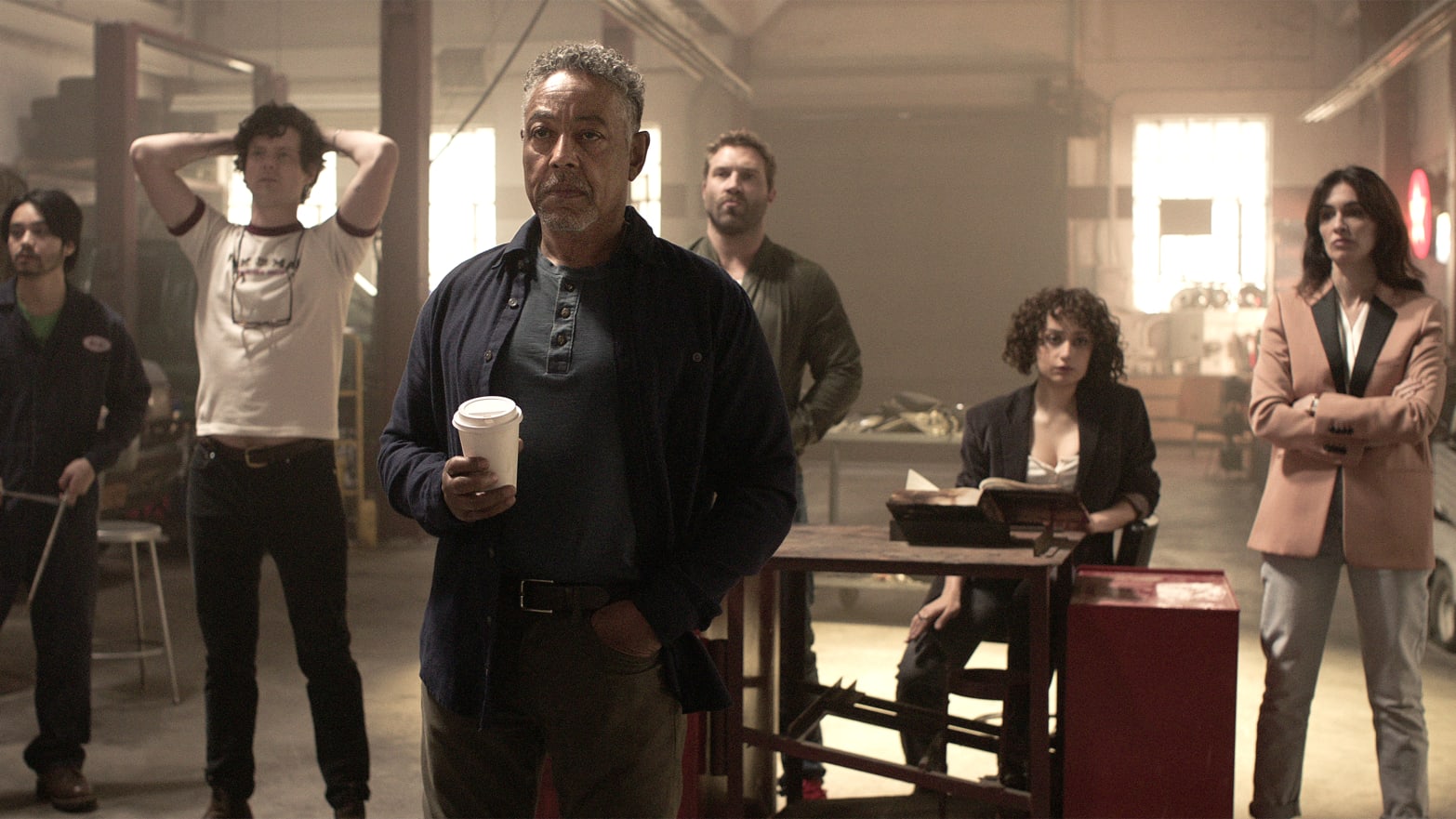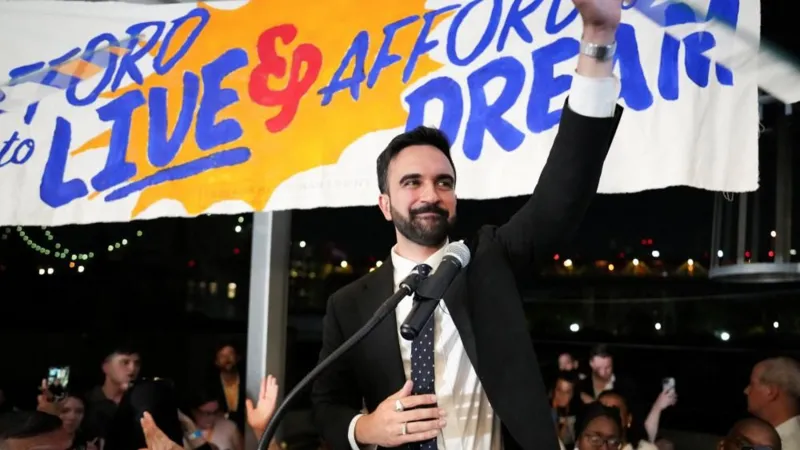Netflix’s Mind-Bending Heist Is 2023’s First Great Series

Kaleidoscope, like its namesake explosion of fractals, has plenty of beautiful things to look at—and I don’t just mean Jai Courtney, one of the members of an elite heist team put together to break into a bank vault for the $7 billion score of a lifetime.
Netflix’s latest limited series, which launched Jan. 1, is intentionally designed with shiny distractions that keep your eyes darting about. There are vivid colors and hidden secrets everywhere you look, making each episode its own hypnotic guessing game. It’s a clever tactic, one that effectively builds on the show’s unique watch experience.
See, Kaleidoscope is created so that its first seven episodes can be watched in any order. Not only that, but each Netflix subscriber will have their episode order presented to them in a different sequence. There are no episode numbers, with each installment instead paired with a color code: “Yellow,” “Pink,” “Orange,” “Blue,” “Green,” “Violet,” and “Red.” “White,” the series finale, is placed at the bottom of the order for every user
Some might think of this nonlinear structure as a gimmick, superficial trickery used to hook viewers and convince them to watch all the way to the end without suffering binge burnout. Is Netflix really shuffling the episodes, and will things really play out all that differently if you watch them out of order? The short answer is “Yes.” And to prove it, I intentionally jumped around from the episode order I was presented so I could test Netflix’s proposition.
As it turns out, Kaleidoscope is even more fun if you play around with it. Upon closer examination, Netflix mixes up the episodes for each user in three different sets: The first two installments (“Yellow” and “Green”), followed by the middle three (“Orange,” “Blue,” and “Violet”), concluding with the final two prior to the finale (“Red,” and “Pink”). But undoubtedly, some users will break the rules and hop around, looking for clues that help make sense of the series and testing whether the disorganized nature actually works.
The series itself is a delightful mind-bender, one that’s even more satisfying to connect the dots to when you think about how the episodes will play in different orders. But Kaleidoscope doesn’t only rely on the unusual narrative device it uses to snare its viewers. Beneath those shuffled colors is a slick and stylish heist series that keeps the tension building as it skips through timelines.
Viewers will find that their allegiances change depending on the episode order, making the greed and betrayal even more intriguing. Pair all of that with a cast of stellar performers, whose characters are as cunning as they are conniving, and Netflix had just dropped the first great series of 2023.
To pull off an effective heist—and an effective heist series—the first thing you need is a charismatic ringleader. Kaleidoscope’s would be Leo Pap, played by one of Hollywood’s greatest secret weapons, Giancarlo Esposito. Leo, a career criminal, has emerged from hiding to assemble a new team for his final job: Robbing SLS Security Systems, the most secure bank vault in the entire world and home to billions of dollars in dirty bonds.
Leo taps his old prison cellmate, Stan (Peter Mark Kendall), to dig into a network of petty thieves for their crew. For a successful job, they’ll need a crooked lawyer, Ava (Paz Vega); a safe-cracker, Bob (Jai Courtney); a driver, RJ (Jordan Mendoza); and a chemist, Judy (Rosaline Elbay).
With Leo’s crew compiled, they’ve got to find a way to drum up the seed cash that will allow them to pull off their grand scheme. To make money, they’ll have to steal money. Most episodes depict these mini-heists: a jailbreak, a jewelry store robbery, a charity gala swindling. Each one takes place sometime over the course of 25 years, some before the $7 billion SLS vault heist and some after. Each smaller score has its own consequences that affect the larger story at play, making both the characters and the audience ponder who can be trusted.
It all leads up to “White,” the episode in which the grand heist takes place. The novelty of placing the fallout from this main event well before the heist episode itself might piss off those who are desperate to watch the robbery go down. But ultimately, this structuring works wonders for Kaleidoscope. By the time audiences get to the day-after-the-heist episode, “Red,” they’ll be so intrigued by seeing the robbery’s aftermath that it will make watching the finale all the more exciting.
The series’ nonlinear structure allows Kaleidoscope to be free from genre conventions. There is no third-act reveal to tell us how the robbery went down, which so many crime stories rely on. Streaming television has been home to plenty of nonlinear storytelling, but reformatting that style for a heist is an inspired twist. This isn’t an Ocean’s film; Brad Pitt is (thankfully) nowhere to be found, and we’re not forced to wait until the final 20 minutes to watch how the crew pulled it all off.
“I giggled with pure delight more than a few times just watching things fall into place.”
In Kaleidoscope, we’re provided with just enough of the post-heist repercussions and pre-crime tensions that, when we see the job happen in real time, the payoffs are delicious—so much so that I giggled with pure delight more than a few times just watching things fall into place.
But the most glinting and gorgeous parts of Kaleidoscope’s ever-changing, colorful mystery are the ones that most heist stories forget to include: real human dynamics. These characters may be criminals, but they’re not beyond feeling. There are proper emotional stakes at hand, especially when Leo’s estranged daughter, Hannah (Gabrielle Kim), comes back into his life. Each actor is pulling their weight—Paz Vega is particularly amusing, stomping around in trench coats and berets, toting guns while walking her dogs—but the real standouts are Esposito and Kim.
Leo and Hannah’s father-daughter relationship is the consistent throughline of a nonlinear portrait, the North Sstar that guides the series toward its epic conclusion. What happened between them to cause the fissure, and how will her presence affect Leo’s plans? Those two questions are ultimately answered, but the build-up to their resolution over eight satisfying episodes is what makes the series’ conclusion so damn potent.
-DB







